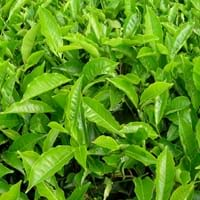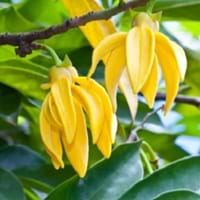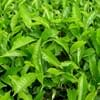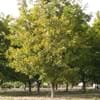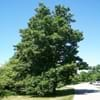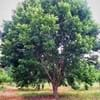Life Span
Not Available
Perennial
Origin
China
Southeastern Asia, India, Australia
Types
Camellia sinensis var. sinensis
Camellia sinensis var. assamica
C. odorata var. fruitcosa (Craib) J. Sincl.
Number of Varieties
Not Available
Habitat
Hillside, Mountain Slopes, Subtropical climates, Tropical regions
Humid climates, Lowland
USDA Hardiness Zone
7-9
10-15
Sunset Zone
H1, 4, 5, 6, 7, 8, 9, 12, 14, 15, 16, 17, 18, 19, 20, 21, 22, 23, 24
H1, H2, 24
Habit
Oval or Rounded
Oval or Rounded
Flower Color
White, Yellow
Light Yellow
Flower Color Modifier
Bicolor
Bicolor
Leaf Color in Spring
Green, Dark Green
Green, Light Green
Leaf Color in Summer
Dark Green
Green
Leaf Color in Fall
Dark Green
Green
Leaf Color in Winter
Dark Green
Green
Leaf Shape
Oval
Long Linear
Plant Season
Fall, Winter
Spring, Summer, Fall
Sunlight
Partial Sun
Full Sun, Partial Sun
Type of Soil
Loam
Loam, Sand
The pH of Soil
Acidic, Neutral
Acidic, Neutral, Alkaline
Soil Drainage
Well drained
Well drained
Bloom Time
Fall, Late Fall, Early Winter
Indeterminate
Tolerances
Not Available
Drought, Salt
Where to Plant?
Ground
Ground
How to Plant?
Seedlings, Stem Planting
Seedlings, Vegetative Reproduction
Plant Maintenance
Medium
Medium
Watering Requirements
Keep ground moist, Prefer drip-irrigation instead of Over-head watering, Requires a lot of watering, Water when soil is dry
Requires a lot of watering, Requires regular watering
In Summer
Lots of watering
Lots of watering
In Spring
Moderate
Average Water
In Winter
Average Water
Ample Water
Soil pH
Acidic, Neutral
Acidic, Neutral, Alkaline
Soil Type
Loam
Loam, Sand
Soil Drainage Capacity
Well drained
Well drained
Sun Exposure
Partial Sun
Full Sun, Partial Sun
Pruning
Generally pruned to waist height, Remove damaged leaves, Remove dead leaves, Remove dead or diseased plant parts
Prune in winter, Prune to control growth
Fertilizers
All-Purpose Liquid Fertilizer
Fertilizer every month during spring
Pests and Diseases
Caterpillars, Moth, Red blotch
Healthy tree
Plant Tolerance
Not Available
Drought, Salt
Flower Petal Number
Single
Single
Foliage Texture
Medium
Medium
Foliage Sheen
Glossy
Glossy
Attracts
Not Available
Birds
Allergy
Not Available
Not Available
Aesthetic Uses
Not Used For Aesthetic Purpose
Showy Purposes
Beauty Benefits
Not Available
Good for skin and hair, Perfumes
Environmental Uses
Air purification
Not Available
Medicinal Uses
Diabetes, High cholestrol, Kidney Stones, Parkinson
Antidepressant, Antiseborrhoeic, Antiseptic, Aphrodisiac, Nervine
Part of Plant Used
Leaves
Flowers
Other Uses
Preferably used as black tea, Used for producing cooking oil, Used in making beverages
Oil is used for aromatherapy, Used as Ornamental plant
Used As Indoor Plant
No
Yes
Used As Outdoor Plant
Yes
Yes
Garden Design
Container, Edible, Feature Plant, Foundation, Hedges
Cutflower, Feature Plant, Shade Trees, Street Trees, Tropical
Botanical Name
CAMELLIA sinensis
CANANGA odorata
Common Name
Tea, Tea Camellia
Chanel No.5 Tree, Perfume Tree, Ylang-Ylang
In Hindi
चाय के पौधे
Ylang-Ylang
In German
Teepflanze
Ylang-Ylang
In French
usine de thé
Ylang-Ylang
In Spanish
planta del té
Ylang-Ylang
In Greek
φυτό του τσαγιού
Ylang-Ylang
In Portuguese
planta do chá
Ylang-Ylang
In Polish
Herbata roślin
Jagodlin
In Latin
Tea herba
Ylang-Ylang
Phylum
Tracheophyta
Spermatophyta
Class
Magnoliopsida
Dicotyledonae
Order
Ericales
Magnoliales
Family
Theaceae
Annonaceae
Clade
Angiosperms, Asterids, Eudicots
Angiosperms, Magnoliids
Tribe
Not Available
Not Available
Subfamily
Not Available
Not Available
Number of Species
Not Available
Not Available
Season and Care of Tea Plant and Ylang-Ylang
Season and care of Tea Plant and Ylang-Ylang is important to know. While considering everything about Tea Plant and Ylang-Ylang Care, growing season is an essential factor. Tea Plant season is Fall and Winter and Ylang-Ylang season is Fall and Winter. The type of soil for Tea Plant is Loam and for Ylang-Ylang is Loam, Sand while the PH of soil for Tea Plant is Acidic, Neutral and for Ylang-Ylang is Acidic, Neutral, Alkaline.
Tea Plant and Ylang-Ylang Physical Information
Tea Plant and Ylang-Ylang physical information is very important for comparison. Tea Plant height is 300.00 cm and width 300.00 cm whereas Ylang-Ylang height is 910.00 cm and width 370.00 cm. The color specification of Tea Plant and Ylang-Ylang are as follows:
Tea Plant flower color: White and Yellow
Tea Plant leaf color: Green and Dark Green
Ylang-Ylang flower color: Light Yellow
- Ylang-Ylang leaf color: Green and Light Green
Care of Tea Plant and Ylang-Ylang
Care of Tea Plant and Ylang-Ylang include pruning, fertilizers, watering etc. Tea Plant pruning is done Generally pruned to waist height, Remove damaged leaves, Remove dead leaves and Remove dead or diseased plant parts and Ylang-Ylang pruning is done Prune in winter and Prune to control growth. In summer Tea Plant needs Lots of watering and in winter, it needs Average Water. Whereas, in summer Ylang-Ylang needs Lots of watering and in winter, it needs Ample Water.
